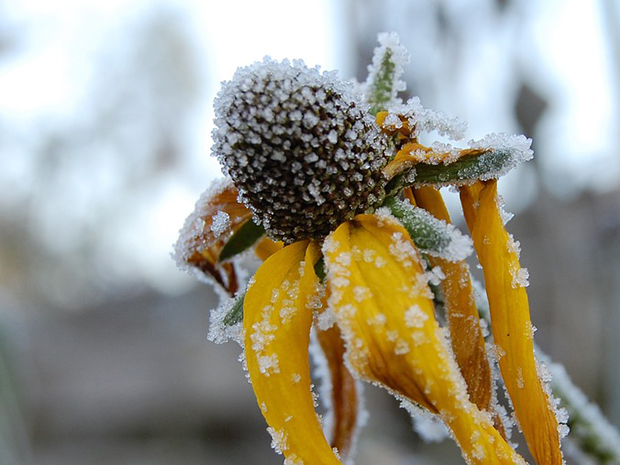Getting the perennial garden ready for fall and winter means many things to many gardeners. Choosing your level of comfort is a good place to start! Methods range from doing nothing at all to carefully attending to each plant and its needs. There is a school of thought that the natural way is the best and that means leaving the garden alone to follow its destiny, but bear in mind this may include natural invaders such as diseases and pests. But if you are of the mind to make things tidy among your landscape plants and be better positioned for spring gardening, then knowing the needs and wants of your perennial flowers is essential.
The basics of putting the perennial garden to bed:
- Do not fertilize. Encouraging new growth now doesn’t help the plant get ready for winter. Adding compost however is a good thing for soil nutrition. The plant will respond to this slowly as needed.
- Keep removing spent flowers and dead and dying foliage.
- Keep the base of plants free of dead leaves and debris particularly before frost.
- Keep watering until the ground freezes. This is the most important factor for how plants weather the winter.
- Apply a layer of mulch or mulched leaves in late fall. Begin gathering leaves now! Don’t add the mulch until mid-November, but this way you’ll be far ahead if you begin mulching leaves as they fall. This protects the crowns of plants. Note: Don’t mulch bearded iris.
- For *tender plants water well, add compost for nutrients and make a small cage from chicken wire and fill with mulch or chopped up leaves. *Any plant that is happier in winter temps a bit higher than you may have in your area.
Lists to help you know the needs or your perennials:
Perennial plants that take care of themselves.
Nothing needs to be done in the fall. These plants will benefit from removal of dead stalks or stems and nothing more.
Aegopodium (bishop’s weed)
Ajuga (bugleweed)
Armeria (sea thrift)
Artemesia (wormword)
Asclepias Tuberosa (butterfly weed)
Astilbe
Aurinia
Coreopsis Verticillata
Delphinium
Dianthus Barbatus (sweet William)
Dianthus (pinks)
Epimedium (barrenwort)
Euphorbia (spurge)
Helleborus (hellebore)
Hens & Chicks
Hosta
Heuchera (coralbells)
Iris Siberica (Siberian iris)
Lamium (dead nettle)
Lobelia cardinalis (cardinal flower)
Ornamental Grasses
Pachysandra
Phlox subulata (creeping phlox)
Saxifraga
Sedum
Thymus (thyme)
Tiarella (foamflower)
Vinca Minor
Cut these plants back to a few inches above the ground.
Aster
Catmint (Nepeta )
Crocosmia (Crocosmia)
Hibiscus (rose mallow)
These plants can be cut back to basal foliage after flowering. Basal foliage is also called vegetative growth.
Many perennials will grow new leaves around the base of the plant after flowering. These should be left on the plant in the fall as they are there to protect the crown.
Alcea Rosea (hollyhocks)
Achillea (yarrow)
Aquilegia (columbine)
Campanula (bellflower)
Coreopsis Grandiflora (tickseed)
Echinacea (coneflower) or leave standing for the seed pods for the birds.
Gaillardia (blanket flower)
Leucanthemum (Shasta daisy)
Monarda (beebalm) or leave standing for birds.
Polemonium (Jacob’s ladder)
Rudbeckia (black-eyed Susan) or leave standing for the seed pods for the birds.
Perennial plants to cut back after a killing frost.
This category of plants will tell you exactly what they need. Perennials with blackened leaves after a frost or two need to be cut back. They’ll look awful!
Anemone
Blackberry Lily (Belamcanda chinensis)
Baptisia Australis (wild blue indigo)
Bearded Iris
Corydalis (Corydalis lutea)
Eupatorium (Joe-Pye weed)
Geranium (hardy geranium) the foliage may last but will turn to mush at some point. Better to cut back after frost.
Paeonia (peony)
Phlox Paniculata (garden phlox)
The Outliers
Clematis – all types – if you have clematis, you’ll want to take a look at this page on pruning and care. before doing anything. Deadheading is never a problem though.
Chrysanthemum (mums) – mums are on a different schedule. Prune before July and leave these plants alone through blooming and the winter.

